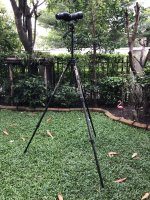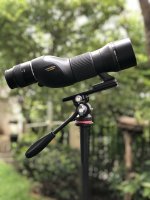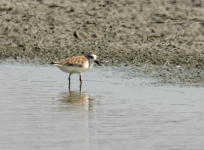Passakorn
Well-known member
I just got the Nikon Monarch 60EDS scope (with 20-60x EP). It is a straight model. I am about 6 feet tall. Now I am using it with a tripod with extendable center column. As the 60EDS‘ foot is towards the front, I notice that the ocular end position can vary (up/down) a lot when I adjust the angle of scope according to the the height where the birds perch. At high angle, I have to adjust a center column a lot to have it fit my eyes with a comfortable watching position. When the bird is high (say around 30 degrees up) the total height of the tripod has to be about 65”to fit my eyes comfortably. I don’t have this problem with the 82EDA which is an angled model as I can adjust with my neck easier or at least I have to adjust less scope’s angle.
What is the best way to choose a tripod‘s height based on the observer’s height for a straight scope? For example if I am 6 feet tall, what is the maximum tripod height I should get and should I get a model with extendable center column (easier to adjust but less stability) or a tripod without a center column (getting rather big when having max height of 70” etc.)? I could use a longer plate to move the center of rotation back towards the center which will make the angle of the scope ocular side be less but longer plate also increases the weight.
Or usually how should I adjust the tripod when using a straight scope so that I don’t have to adjust the tripod’s height all the time when looking at the birds perching at different heights in the trees?
Thank you so much for your help,
Passakorn
What is the best way to choose a tripod‘s height based on the observer’s height for a straight scope? For example if I am 6 feet tall, what is the maximum tripod height I should get and should I get a model with extendable center column (easier to adjust but less stability) or a tripod without a center column (getting rather big when having max height of 70” etc.)? I could use a longer plate to move the center of rotation back towards the center which will make the angle of the scope ocular side be less but longer plate also increases the weight.
Or usually how should I adjust the tripod when using a straight scope so that I don’t have to adjust the tripod’s height all the time when looking at the birds perching at different heights in the trees?
Thank you so much for your help,
Passakorn
Last edited:









